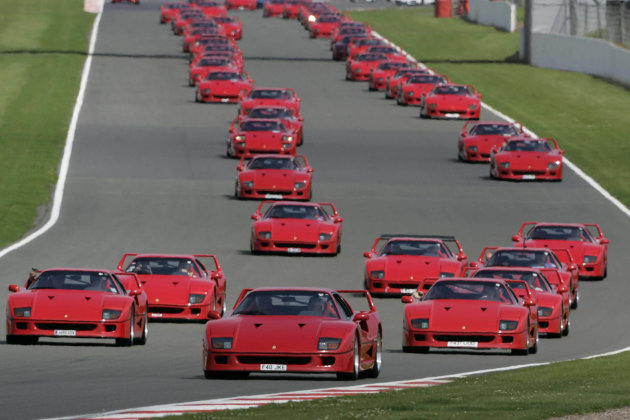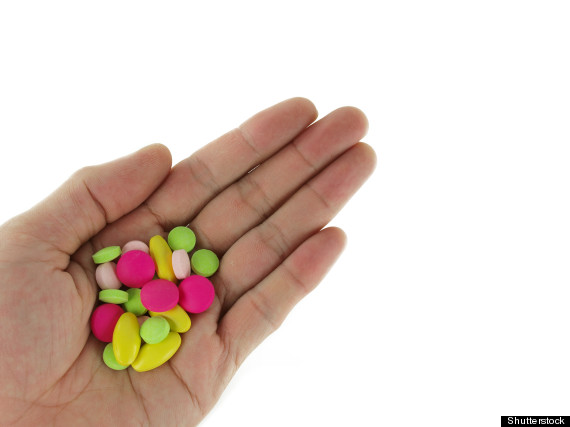
With the all-electric Leaf, Nissan is taking the lead in pure electric cars in the United States. The Nissan Leaf is a medium-size all-electric hatchback that seats five adults and has a range of 100 miles. The purchase price is around $25,000, after federal government incentives. It started to roll out in select cities in late 2010.
Unlike a hybrid car—which is fueled by gasoline and uses a battery and motor to improve efficiency—an electric car is powered exclusively by electricity. Historically, EVs have not been widely adopted because of limited driving range before needing to be recharged, long recharging times, and a lack of commitment by automakers to produce and market electric cars that have all the creature comforts of gas-powered cars. That's changing. As battery technology improves—simultaneously increasing energy storage and reducing cost—major automakers are expected to begin introducing a new generation of electric cars.
Electric cars produce no tailpipe emissions, reduce our dependency on oil, and are cheaper to operate. Of course, the process of producing the electricity moves the emissions further upstream to the utility company's smokestack—but even dirty electricity used in electric cars usually reduces our collective carbon footprint.
Another factor is convenience: In one trip to the gas station, you can pump 330 kilowatt-hours of energy into a 10-gallon tank. It would take about 9 days to get the same amount of energy from household electric current. Fortunately, it takes hours and not days to recharge an electric car, because it's much more efficient. Speaking of convenience, let's not forget two important points: charging up at home means never going to a gas station—and electric cars require almost none of the maintenance, like oil changes and emissions checks, that internal combustion cars require.
Electric motors develop their highest torque from zero rpms—meaning fast (and silent) zero-to-60 acceleration times.
Note: In the illustration, we show the relative features of electric cars and gas-powered cars. However, it doesn't have to be an "either-or" situation. Plug-in hybrids offer many of the benefits of electric cars while mitigating most of the drawbacks, such as limited driving range.
1New and Upcoming Electric Cars
Just as the major car companies were crushing their electric car programs in 2004 and 2005, the perfect storm was brewing on the horizon: Hurricane Katrina, growing acceptance of global warming, runaway Prius sales, oil price spikes, green marketing galore…The major auto companies went right back to the drawing board and emerged with big plans for electric cars.
BMW Megacity

BMW is working on a small electric car that could launch in 2012. The Megacity is a low-slung three-door four-seat hatchback coupe. The car is smaller than the Honda Fit, and will have a projected range of 100 miles. The BMW Megacity, which could be sold either as a BMW or Mini, is not much more than a concept at this stage, but pressure on BMW to meet California's zero emissions vehicle requirements might bring the car to life—albeit in small numbers.
BYD E6

If China's BYD can deliver on its big promises for the E6 all-electric crossover, then it could take the US by storm. (Investment guru Warren Buffet is betting that BYD will come through.) Unlike the small city-oriented electric runabouts on slate from established carmakers, the E6 is a five-passenger wagon capable of carting a typical American family. Moreover, the E6 has a range of 200 to 250 miles and boasts a 0 to 60 mph time of less than 10 seconds. Top speed is 100 mph. The vehicle can be fully charged in about 10 hours by plugging into a standard household outlet. BYD says that it takes only 10 minutes to charge to 50 percent capacity and 15 minutes to the 80 percent level. BYD has been in the battery business only since 1995, and started building cars in 2003. Considering that the company maintains an R&D department with 8,000 engineers, it's not surprising that the initials BYD stand for "Build Your Dreams."

Technically a plug-in hybrid rather than an electric car, the Chevy Volt's technology has leapfrogged standard hybrids like the Toyota Prius. This well-equipped, five-door, four-seat hatchback operates as an electric car for its first 35 or so miles after a full charge and then uses gas to extend its range. It burns no gasoline during the first 40 miles after a charge, drawing energy from a lithium ion battery pack. When the battery is depleted, a 1.4-liter engine kicks in to power a generator that sustains the battery charge enough to give the car another 260 miles of range.

Southern California automaker Coda Automotive announced plans to bring a new electric car to the US from China in 2010. The all-electric sedan is based on an existing gas-powered four-door car, known as the Hafei Saibao 3, built in Harbin, China. Re-engineered with a lithium ion battery, the Coda sedan promises a driving range of 100 miles. The MSRP for the Coda sedan will be around $44,000.

The Ford Focus EV, due out in late 2011, is the first electric car designed for the generic aisle of the dealership. Ford's plans for the Focus EV are not aimed at buzz and sizzle. Instead, the company is focused on addressing the biggest obstacle between EVs and the mainstream: cost. By choosing an existing platform—the Focus—and using technology developed by auto supplier Magna, Ford will save the expense associated with developing a unique design. The Ford Focus EV is targeted to have a range of 100 miles between charges, courtesy of a 23 kWh battery pack.

With the introduction of the Ford Transit Connect Electric, unveiled at this week's Chicago Auto Show, Ford may have produced the first green halo truck. When you combine car-like driving dynamics, cargo capacity and accessibility with the the built-in marketing opportunities for small businesses to emblazon the large exterior panels with green slogans such as "Zero-Emissions" and "100 percent electric," it makes for a compelling package. The vehicle has a 75 mile per hour top speed and can drive up to 80 miles on a charge—perfectly fine for the needs of a local delivery cycle.
Mercedes BlueZero

In late 2008, Mercedes-Benz unveiled its BlueZero concept vehicles—the core idea is to build electric, plug-in hybrid, and fuel-cell cars on a single platform. Daimler had previously announced that its next generation FCV fuel cell cars will be built on a subcompact (B-class) chassis in 2010. Migrating to the BlueZero would only be a minor adjustment. Daimler's future electric cars could also shift to the BlueZero—because the guts of its electric cars already fit in the smaller Smart and A-Class. Sharing platforms and technology architectures could allow Daimler to telescope development and production timelines, and save money on rolling out new electric models. At this stage, it's still a concept.

The limited edition Mini E car is based on the Mini Cooper platform. The car's 380-volt battery is comprised of 5,088 individual cells, and can be recharged using a standard 110-volt electrical outlet. The battery pack has a maximum capacity of 35 kilowatt hours. BMW will offer a specialized high-amp wall-mounted device that will allow a full replenishment of the battery in less than three hours. The Mini E will have a cruising range of 150 miles. Approximately 500 cars are slated for production and lease to select customers in Southern California and the New York area. Pricing, as well as production beyond the first 500 units, is not yet determined.

Mitsubishi began delivering the all-electric iMiev to Japanese customers in 2009. Production numbers are slowly ramping up from the current target of a few thousand per year. The small EV uses a single 47 kW motor and 16 kWh lithium ion batteries—to yield about 75 miles of range and a top speed of 80 miles per hour. The vehicle is a four-seater with a real but cramped back seat.

Nissan is calling its new electric car—the Nissan Leaf—the "world's first affordable, zero-emission car." And they could be right. Unveiled on Aug. 2, 2009, the Leaf is a medium-size all-electric hatchback that seats five adults and has a range of 100 miles. At just under $33,000, minus tax incentives, the LEAF is certainly accessible to mainstream buyers. The Nissan Leaf's closest comparable future all-electric car is the Ford Focus Electric. The distinguishing characteristic between the two vehicles could be design—pitting the established look of the Ford Focus against the purpose-built Nissan Leaf, which went on sale in late 2010. As of Feb. 2011, most of the first set of customers, who placed advance orders, are still waiting on delivery.
Pininfarina Blue Car

Legendary Italian sports car designer Pininfarina will begin production of its small all-electric four-seat five-door Blue Car in 2010. The Blue Car is powered by a 50 kW electric motor getting energy from a lithium polymer battery pack with 150 miles of range. The company began accepting reservations from European customers in spring 2009. The lease will be about $500 per month. The body of the car is designed as an elastic shell resting forcefully on the four wheels, providing more room than the average city car. Techno-goodies include solar panels on the roof, and the ability to use a smart phone to monitor battery state-of-charge, and to start AC or heat from a distance. Pininfarina will start slow, only in Europe, and aim to ramp up production up to 60,000 units per year by 2015.
Renault Fluence

Patrick Pelata, executive vice president, said that the all-electric Renault Fluence will launch in 2011, starting with at least 20,000 units in the first year. (The gas-powered Fluence debuts in 2009.) The company will produce a smaller compact electric car in the following year. No more details at this time, although its sister company Nissan will introduce its yet-to-be-named electric-only model also in 2012. That's probably not a coincidence.
Smart ED

Despite considerable media buzz for Daimler's Smart ForTwo, microcars have not taken American roads by storm. Perhaps consumers may be more forgiving of the lack of size and power if the Smart is offered with an electric drive. The first models will likely go to Europe in about 2010. Availability in the US is uncertain. The car will provide 70 miles of range and 70 miles per hour on the freeway. Recharge time from 30 to 80 percent capacity is about three and a half hours. The gas version of the Smart ForTwo has earned low marks for handling, especially at higher speeds.

The Achilles Heel of electric cars has been the limited range they can travel between charges. The Subaru R1e could help change that. The diminutive two-seater, about 20 inches longer than a Smart ForTwo, has a top speed of 65 miles per hour and a range of 50 miles. More importantly, the time to recharge the 346-volt lithium ion battery pack has been reduced to about 15 minutes. Here's the hitch: To get the faster charging time, you need a special stationary charger. Using the onboard standard charger puts the electricity refueling time back to about eight hours.

Toyota introduced the FT-EV electric concept at the 2009 Detroit Auto Show, hinting that it might offer an urban all-electric commuter vehicle in the next few years. The FT-EV concept shares its platform with the company's Japanese and European minicar, the Toyota iQ. The iQ is larger than the quintessential minicar, the Smart Fortwo, but not by much. Its wheelbase is a little more than five inches longer, and on the whole, the car is only about a foot longer than the Smart—11.4 inches to be exact. The electric version on display at the Detroit Auto Show, the Toyota FT-EV concept, offers driving range of 50 miles, according to Toyota. The company is expected to launch 10 new hybrid gas-electric models globally by 2012, but has not made firm commitments to bring a full battery-electric car to market.

What makes the Model S so cool? First of all, the visual design is gorgeous. Second, it seats five—or seven if you count the two side-facing rear seats for small children. There are killer features, like the 17-inch touch screen that provides all of the vehicle's interface components such as climate control and entertainment, but also offers 3G or wireless connectivity. But most importantly, the Model S is way more affordable than the company's $109,000 Tesla Roadster. The current price target for the Tesla Model S is $57,900 (minus a $7,500 federal tax credit)—still not in range for most mainstream buyers but moving in the right direction. The Model S is planned for release in late 2011.
The following companies have announced intentions to produce electric vehicles, but have not discussed specific vehicle details: Volkswagen and Peugeot Citroën.
2Limited Run Electric Cars
Not content to follow the slow timelines from the major car companies, a number of entrepreneurs have taken the bold step of building mainstream highway-capable all-electric vehicles. The payoff could be big—but the logistical hurdles, such as federal highway crash testing, are daunting and very expensive. Those costs will get passed on to customers—those that are willing to wait for months or years for innovative companies to roll out models even in small quantities.
The poster child of the independent electric car movement has been Tesla Motors. When the company launched, it promised to reinvent the auto industry in the mold of a Silicon Valley start-up—and leave Detroit in its dust. After hitting a number of potholes—product delays, boardroom discord, and major operating losses—the company emerged looking good. An investment from Daimler, a $465 million government loan, and a potential IPO, add up to cash and momentum for the electric car start-up.

The Tesla Roadster is a screaming-fast, all-electric two-seater sports car built on the frame of the Lotus Elise. The specs, if they can be delivered, are impressive: 0 – 60 mph in less than four seconds, 135-mpg equivalent, 200-mile range, and a brilliant tech design that wires together nearly 7,000 mass-commodity rechargeable lithium batteries. The price? Just north of $100,000. While Tesla's path to production hasn't been as smooth as the Roadster's power delivery, the company seems to be past the worst of its growing pains. The 2010 Tesla Roadster continues to earn praise for its acceleration—what Scientific America calls "an insane amusement park ride." The company has delivered nearly 1,000 Roadsters to date (as of November 2009).

Th!nk—formerly owned by Ford—had big plans to become a leader in the emerging EV market in the United States. Those plans fell short, as the company moved to the brink of bankruptcy in late 2008. In an extraordinary rescue effort, Ener1—the parent company of battery-maker EnerDel—and other investors revived small-scale production of the vehicle in Finland. They now have plans to produce as many as 60,000 units per year in the US, probably in Indiana where EnerDel makes lithium ion batteries. Before falling into a financial crisis, the company was on its sixth generation of the Th!nk City, a $28,000 two-seater car with a maximum speed of 65 miles per hour—and a driving range of about 120 miles. Recharge time is about four hours.

Volvo's conservative approach is apparent in the Volvo C30 EV, the all-electric four-seat concept sedan unveiled at the 2010 Detroit auto show. At first glance, the stats may seem unimpressive: a range of about 90 miles, acceleration from 0-60 mph in 11 seconds, a top speed of about 80 miles per hour, and a leisurely eight hours to recharge the 24 kilowatt-hour battery pack from 220-volt household outlet. Volvo could push these numbers further or race to bring the car to market faster, but it isn't. Instead, the company is slowing down and chilling out—and making sure that customers' expectations are met. In 2011, Volvo will build and test a fleet of 50 C30 EVs.
Wheego Whip LiFe

The highway-ready Wheego Whip LiFe goes approximately 100 miles on a charge, top speed of 70 mph, and retails for $32,995. The two-seat Smart look-alike—although it's a little bigger—comes equipped with driver and passenger airbags, anti-lock brakes, air conditioning, and power windows and locks. The vehicle platform is made in China and the 30 kWh lithium battery pack—which can be charged using a standard J1772 connection—comes from LG Chem in South Korea. The Atlanta-based company promises delivery by the end of 2010.
Within the Limited Run category, a number of companies are converting existing gas-engine models into electric vehicles:

Your first stop in buying AC Propulsion's eBox is a visit to your local Scion dealer to purchase a 5-speed Scion xB wagon, for about $15,000. Or AC Propulsion will coordinate the purchase of an xB near their San Dimas, Calif. headquarters. Then, their engineers will remove the internal combustion engine and related components, and install AC Propulsion's electric drive and battery system composed of more than 5,000 small cells. The cost of conversion will add another $55,000 to the purchase price. The company expects to build about 20 to 25 eBoxes a year.
Also, limited runs of the following all-electric sports car are extremely limited: the UEV Spyder, Mullen L1x-75, UK's Lightning and the Venturi Fetish, selling for about $75,000, $125,000, $200,000 and $300,000 respectively.
3Low-Speed and Three-Wheel Electric Cars
The arduous road to delivering a new highway-speed electric vehicle to the market can be bypassed in two primary ways: limiting the electric vehicle to three wheels (so it can be legally classified as a motorcycle) or limiting the vehicles legal top speed to 25 miles per hour (so it can avoid highway crash testing). Those strategies lower the "barrier to entry," opening the gates to scores of fledgling companies offering some mighty funky machines. It's a long list, so we'll keep our descriptions to a minimum. We've also eliminated companies that do not provide a base-level of information about products and prices—and products not directly selling in North America.
Aptera 2e

Winner of the funkiest EV design award, the Aptera 2e (formerly Type-1), looks like a cross between a motorcycle and ultralight single-occupant airplane. Built near San Diego, and selling for approximately $27,000, the Aptera 2e is competing in the Automotive X Prize competition. Thousands of potential buyers paid a $500 refundable deposit in anticipation of production scheduled for late 2008, and then delayed a few more times. Only time will tell if the company can deliver to its loyal fans.
http://www.aptera.com
Bad Boy Buggies

Bubba Kaiser and Joe Palermo of Natchez, Miss. developed the Bad Boy Buggy as a hunting tool. The $10,000 off-road all-electric vehicle takes advantage of an EV's quietness to creep up on prey. (The Los Angeles Times quips that the Bad Boy Buggy is an electric vehicle that even Sarah Palin could love.) The vehicle maxes out at 20 miles per hour with 35 miles per charge—but it travels on all terrains. The 1,650-pound Buggy uses lead-acid batteries to turn two 13-horsepower motors with 130 foot-pounds of torque, giving it a payload of 1,000 pounds to haul off your kill. The entry level model sells for about $10,000 and a stretch version goes for $11,500. The buggy comes in four color choices–green, red, black and camouflage.
http://www.badboybuggies.com/
BG C100

Barry Bernstein, a steel wholesaler from Philadelphia, founded BG Automotive Group with the dream of building an affordable electric car in the United States. The chassis and body of the BG C100 are currently imported from the Far East, with the rest of the components coming from US suppliers. Assemble also in America. The current neighborhood electric model, the BG C100, is imported from Asia. The C100 promises a driving range of 60 to 80 miles from a pack of eight lead acid batteries. The four door, five-passenger hatchback—available from $16,000 to $18,000 depending on the option package—comes with dual airbags, climate control, CD stereo, power doors/windows, an iPhone docking station on the dash, and 100-percent money guarantee. The first models are expected to ship in May 2009.
http://www.bgelectriccars.com/
Dynasty IT

Dynasty Electric Car Company, formerly based in British Columbia, Canada, offers five different variants of its low-speed electric vehicle, including a sedan, mini pick-up, van and two open-air versions. The "It," which has a range of about 30 miles and a top speed of about 30 miles per hour, sells for approximately $20,000. In May 2008, the company was purchased by Pakistani automaker Karakoram Motors.
http://www.itiselectric.com
Flybo or XFD-6000ZK

The electric Chinese Smart Car knock-off, measuring just 102.3 inches long on a 71-inch wheelbase, has a reported top speed of 45 mph and a range of 70 miles. Articles on the web say that this neighborhood electric vehicle comes up short on build quality, and is not recommended for winter use. The rear-wheel-drive Flybo, primarily marketed towards gated communities, has a price tag around $10,000.
GEM

Global Electric Motorcars (GEM), a Chrysler corporation, is the granddaddy of neighborhood electric vehicle companies. GEM offers approximately six models, ranging in price from about $7,000 to $13,000, and primarily sells to resorts, universities and retirement communities. GEM models aren't the most exciting, but they're here now and they work!
http://www.gemcar.com
Kurrent

The Kurrent, an electric car originally designed in Italy, was being produced in small quantities by American Electric Vehicle in Ferndale, Michigan. The car continues to be made in Italy, but according to EVFinder.com, US production has stopped. The vehicle uses lead acid batteries to deliver a range of about 40 miles. The price of the Kurrent was competitive with GEM products at approximately $10,000—but offers more "amenities," such as windshield wipers, doors, headlights, seatbelts and a trunk.
www.getkurrent.com

The Myers NmG is a funky, single-occupant three-wheeled electric vehicle made by Myers Motors in Tallmadge, Ohio. The "personal electric vehicle," which features two wheels in the front and one in the back is $36,000. It uses thirteen 12-volt, lead acid batteries that can be charged through a standard 110-volt outlet. Six to eight hours of charging will carry you approximately 30 miles.
www.myersmotors.com
Reva / G-Whiz

The Indian Reva Electric Car Company wants to bring environmentally responsible motoring across the globe. The company is set to launch its next electric vehicle in 2009. The new version promises 75 miles per charge—a boost of 25 miles from the switch to lithium ion batteries and the addition of roof-mounted solar panels. The company is eyeing a sales target of 4,000 vehicles, about half of which will be exported. It is also building a new assembly plant in Bangalore, India with a capacity of 30,000 units per year. The current model, REVAi, is marketed in the UK as G-Whiz. There are more than 2,000 Reva electric cars already on the roads in London and Bangalore, with a distribution network being built up across Europe, South America and parts of Asia.

The Tango T600 electric car, from Commuter Cars in Spokane, Wash., is 102 inches long and only 39 inches wide. In other words, it's as tall as most conventional cars, not quite as long, but only half the size from side to side. That means driver in front and passenger in back—like a tandem bicycle. The price exceeds $100,000. (Note: Technically, the Tango T600 is a highway-capable four-wheel vehicle; however, the vehicle's size limits its practicality.)
www.commutercars.com

The Venture One $20,000 three-wheeled, two-seater tilt-a-whirl motorcycle-car gizmo is expected in 2009. The fully electric version, featuring two in-wheel 20 kW electric motors and a 17 kWh lithium ion battery pack, delivers approximately 120 miles on a single charge. Plug-in hybrid versions are also in the works from Venture Vehicles in Los Angeles.
www.flytheroad.com

The ZAP Xebra sedan will never be described as luxurious, smooth, or extremely well built—but unlike much of the competition in the electric car market, it's real, affordable, and available. For about $12,000, you can bring home the Chinese-built all-electric four-seater and begin enjoying the benefits of a zero-emissions vehicle. The Xebra is the least expensive three-wheel road-ready electric vehicle on our list.
www.zapworld.com
ZENN Car

Made in St-Jérome, north of Montréal, the ZENN is a neighborhood electric vehicle with a range of approximately 35 miles and a full recharge time of 8 to 9 hours from a conventional electrical outlet. A base-level ZENN—no air conditioning or radio—sells for approximately $13,000 or with AC for about $15,000. The company has future plans to launch a high-speed model called the cityZENN, offering 80 mph top speed and 250-mile range. ZENN headquarters are in Toronto.
www.zenncars.com
4Discontinued and Rare Electric Cars
The most promising recent period for electric vehicles was the 1990s—at least it seemed so at the time. In September 1990, the California Air Resources Board mandated that 2 percent of all new cars sold by major automakers in California would be "zero emission" vehicles by 1998—growing to 10 percent by 2003. That sent automakers scrambling to produce electric vehicles for the mass market. Obviously, things didn't work out as planned. (See "Who Killed the Electric Car" for details.) Very few units were ever produced, and nearly all of them were destroyed. The remaining units are extremely hard to find and very expensive.
RAV4 EV

From 1997 to 2003, Toyota made approximately 1,500 all-electric versions of its popular RAV4 model. From the outside, the RAV4 EV looks the same as a gasoline version of the vehicle, and has all the versatility of a small utility vehicle. The top speed is approximately 80 miles per hour—with a range of about 100 miles, and a full recharge time of five hours. Most of the vehicles were destroyed, but miraculously, Toyota allowed 328 RAV4 EVs to be sold. The suggested retail price, at the time, was $42,000. A rare used RAV4 EV can sell these days for $70,000 or more.
EV1

Time Magazine named it one of the 50 worst cars of all time, but the customers who leased the EV1 had a quasi-religious devotion to the zippy two-seater. General Motors made fewer than 1,000 EV1s by the time the company canceled production, claiming that demand was too limited for a two-seater with a range of about 120 miles, and a recharge time of approximately eight hours. GM crushed nearly every single EV1, so even its biggest devotees cannot find a used EV1 to purchase.
Honda EV Plus

The Honda EV Plus was a two-door model, but could seat four. Driving range was approximately 100 miles. Only about 300 EV Plus units were made and sold—and the purchase price was a hefty $53,000. Most were destroyed, leaving a non-existent market for the vehicle.
Ford Electric Ranger

Ford produced the Electric Ranger from 1998 to 2002. Most of the 1,500 units were leased to fleets, although a handful of vehicles were sold to individuals. Nearly all leases were terminated between 2003 and 2005. Ford made a few Ford Electric Rangers using nickel metal hydride batteries, which yielded 65 miles in range. Most used lead acid batteries, with a more limited range. The rare used Ford Electric Ranger has appears on eBay for anywhere between $10,000 and $25,000.
Nissan Altra

The Nissan Altra was produced between 1998 and 2002—although only about 200 vehicles were made. By appearances, the Nissan Altra EV looked like a regular mid-sized station wagon. The Altra offered ample cargo room and numerous amenities, such as power mirrors and windows, keyless entry, and four-wheel anti-lock brakes. Top speed for the Nissan Altra was 80 mph, and it could travel about 100 miles between charges.
Chevrolet S-10 Electric

Fewer than 500 Chevy S10 Electric vehicles were produced. Range was 90 miles. Most were leased to fleets (and subsequently destroyed), but approximately 60 were sold and could appear in auctions. (Photo by Mike Weston.)
Chrysler Epic Electric Minivan

Chrysler released the all-electric no-frills Chrysler Epic minivan in 1998. The acronym EPIC stands for Electric Powered Interurban Commuter. Driving range was approximately 80 miles, with recharge times of four to five hours. Performance was modest, with a 0 – 60 mph time of 16 seconds.

Phoenix Motorcars, based in Rancho Cucamonga, Calif., had big plans to shake up the EV world, but fell short and finally sputtered into Chapter 11 in April 2009. Its fate is undetermined but the prospects are not high. The company had planned to use engine-less vehicles supplied by Ssangyong, Korea's fourth largest automaker, as the basis for its electric vehicle line in the US. (Ssangyong doesn't sell cars in the United States). Analysts questioned Phoenix's business model for years and its capacity to deliver a $45,000 SUT in any quantities. It now appears that the few models that were produced will become collector's items.
Solectria Force

In the early 1990s, the Solectria Corporation of Wilmington, Massachusetts (now Azure Dynamics Corporation), managed to convert about 400 Geo Metros into an electric vehicle called the Solectria "Force." Top speeds are about 70 mph, and 13 12-volt lead acid cells provide about 40 miles of range. Solectria Force owners (http://portev.org/solectria/ ) rarely let go of these vehicles.










 With the all-electric Leaf, Nissan is taking the lead in pure electric cars in the United States. The Nissan Leaf is a medium-size all-electric hatchback that seats five adults and has a range of 100 miles. The purchase price is around $25,000, after federal government incentives. It started to roll out in select cities in late 2010.
With the all-electric Leaf, Nissan is taking the lead in pure electric cars in the United States. The Nissan Leaf is a medium-size all-electric hatchback that seats five adults and has a range of 100 miles. The purchase price is around $25,000, after federal government incentives. It started to roll out in select cities in late 2010.











































